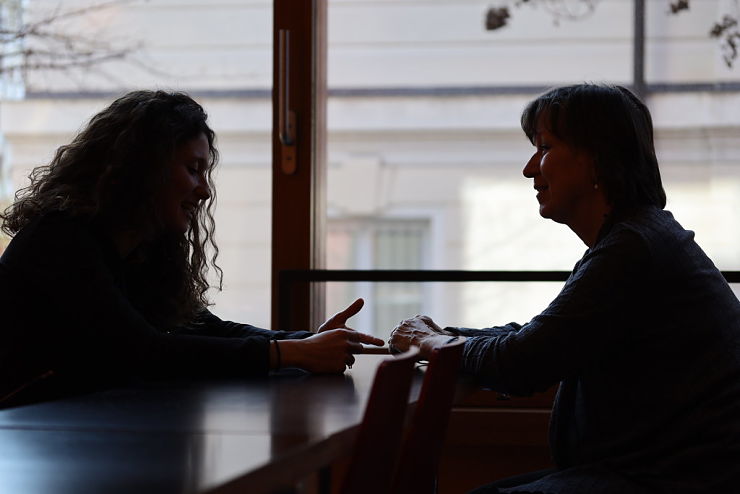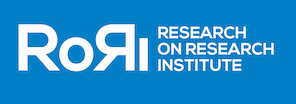An Innocuous Quote by Interviewee 11: Re-Thinking Interviews in Social Research

Interviews and transcripts are like leaky buckets. More life escapes out of them then is left in. Twenty-three years ago, I did my first interview. I stood near the University of Essen campus finding students with a Turkish heritage to talk to for my PhD. A young woman agreed, and we sat on a concrete bench. I pressed record, and for the first but not the last time, worried about whether my recorder was actually recording. She spoke about her fathers’ experience as a Gastarbeiter (guest worker), the name given to migrants employed on a time-limited basis in specific low paid, unhealthy, heavy manufacturing jobs. The young woman said: “I’m Turkish, not German. My dad worked himself sick here.” This is the quote from Interviewee 11 that made it into my doctorate.
I failed to get anything published from my PhD, and then spent 23 years touring various corners of qualitative research. Somewhere in the middle, I became a professional playwright and youth worker and realized either that what I wanted to say lay outside of sociology or that sociology needed to change so that I could say it. I have not yet figured out which.

There are two reasons interviews and transcripts are like leaky buckets. Firstly, a person’s life has a temporal context. They have been, and now they are here. Secondly, people have sensory contexts. We do not live outside our senses but think and feel with them. Yet our methods erase both the temporal and sensory dimensions. In my analysis, I cut up the transcript containing Interviewee 11’s words, placing them alongside other interviewees’ words under themes like ‘forms of discrimination,’ or ‘employment in heavy industry.’ I also abstracted what Interviewee 11 said from her visual and aural environment. The tension in her words and its release were lost; the widening of her eyes, and the posture changes she used to make her points – lost too. “My dad worked himself sick here.” I could not get across the weight of the word ‘here.’
I am experienced in both analyzing transcripts and writing theater scripts. There is something about the poverty of transcripts and interviews that the process of writing theater and performance reveals. In qualitative research, we move successively from interview to recording, transcription, data and analysis. At each point the multisensory context of the original conversation is further detached. Thought is increasingly separated from its context leaving us sitting in Plato’s cave with our mind siloed from the ‘field’ but for the clean, pure transcript of data in front of us.
Actors do the opposite. They move from a script read silently alone, to reading it out loud alone, to sit-down readings with other actors and subsequent rehearsal and performance. Sensory contexts are added at each point, not stripped. Meaning changes as other sensory and dialogic layers are added. Until finally, a script is performed and it lives, breathes and transforms again because of the power of performance and witness.
I am not trying to say that theater is wonderful nor that researchers should do theater. In fact, I do not like most plays and prefer Netflix. And I certainly know what it is like to be brown in a theater where white people are wondering if the non-Kantian, primitive subject really understands. But in theater at its best, I think there is a multisensory recognition of ourselves in others, a recognition of that contested concept – humanity. Integral to it is how otherwise scripted, static words are transformed by emotion, embodiment, movement, touch, breathing, speaking, listening and the presence of other actors and an audience. Meaning is not siloed from feeling but instead occurs with it. This recognition of humanity was absent from my PhD, palpably demonstrated by my naming the student ‘Interviewee 11.’
Being a playwright gave me a sharper appreciation of making meaning with our senses and what is lost in social research by the dissection of meaning from feeling in the journey from interview to journal article. There are better ways to recognise and learn about the people we are researching. These involve being sensorily attuned, and carry implications for aesthetic, dialogue and form.
As well as theater, there are places where thinking and feeling are not separated from each other. Places where a person’s past and present are not sliced and diced. Places where analysis occurs with people, not by interviewers alone. Frustrated by sociology’s limits, I was drawn to community practitioners from choreographers to radio program makers to special needs teaching assistants in primary schools. In how they and others work there are possibilities for capturing the sense of Interviewee 11’s posture, the tension in her words and the world of weight present as she pronounced the word ‘here.’ This is because such professions, where thinking with our senses is accepted, work with a broader set of aesthetics – such as movement, touch and sound – than researchers generally do. Exploring how better to use sense and aesthetic is what social research should do if it wants to learn more about the world. This necessarily involves rethinking the form of sociological texts too, but I think that in doing this we can go beyond the limits of the methods we so often use.
If you heard Interviewee 11’s words and the tension in her breathing, you might understand more than if you just read them. If you could see her posture, perhaps more still. Breathing and posture are central to dance and movement aesthetics. What about if her understanding was rendered through this form? St Helen’s Primary School and Gecko Theatre work with Sinti and Roma schoolchildren in Ipswich to help them capture, reflect and analyze their experiences through choreographed movement. Could sociologists contribute to similar projects? Perhaps Interviewee 11 might have wanted to use her own words with like-minded colleagues to produce dialogue, monologue and soundscapes. Would shifting from an interview rendered through me cutting and splicing her words towards a present-tense, multi-character, audio dialogue enhance both her expression and our understanding? Also in Ipswich, the WASSUP group of young women draw on their experiences to produce audio-based, dialogue-driven drama to counter domestic and sexual violence. Can social researchers use and learn from this form?
Maybe Interviewee 11 might have said that an interview was enough. I did not ask her. Nonetheless, to move past the leaky bucket interview we need our methods to reflect how we think with our senses, not in isolation from them. And to learn from others beyond the social science research bubble to do this. I believe that today, 23 years later, through doing these things I could convey the weight of Interviewee 11’s words better.




























































































Thanks Sue. I had meant to get back to many months ago but did not. I will try to find an institutional email address through which to contact you. I would definitely like to take a look at your work
As a researcher into creative dance/movement and social wellbeing, I understand Dr Sinha’s view well. The subtle nuances of movement speak volumes. I included a DVD with my PhD thesis in the hope that it would aid understanding of what movement, especially creative movement, could convey about a dancer’s emotional disposition. This supplemented data from individual interviews and focus groups. They also kept diaries which some of them returned at the end of the data collection period. Movement and gestural attitude are as important in the interviews as in the dance sessions: I could have followed this up with comparisons… Read more »